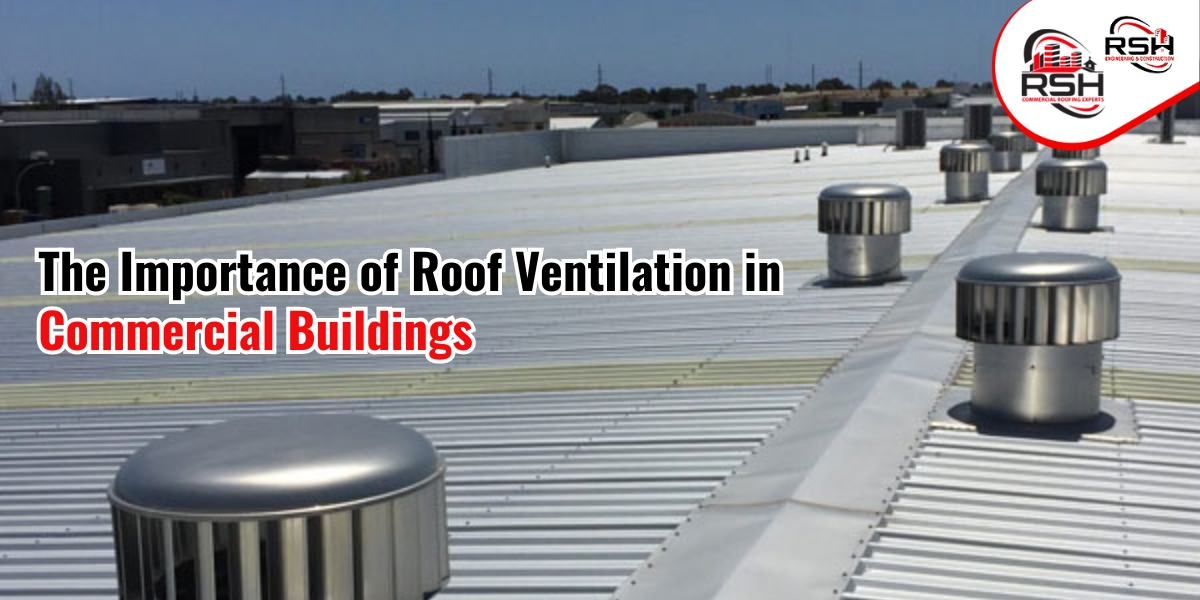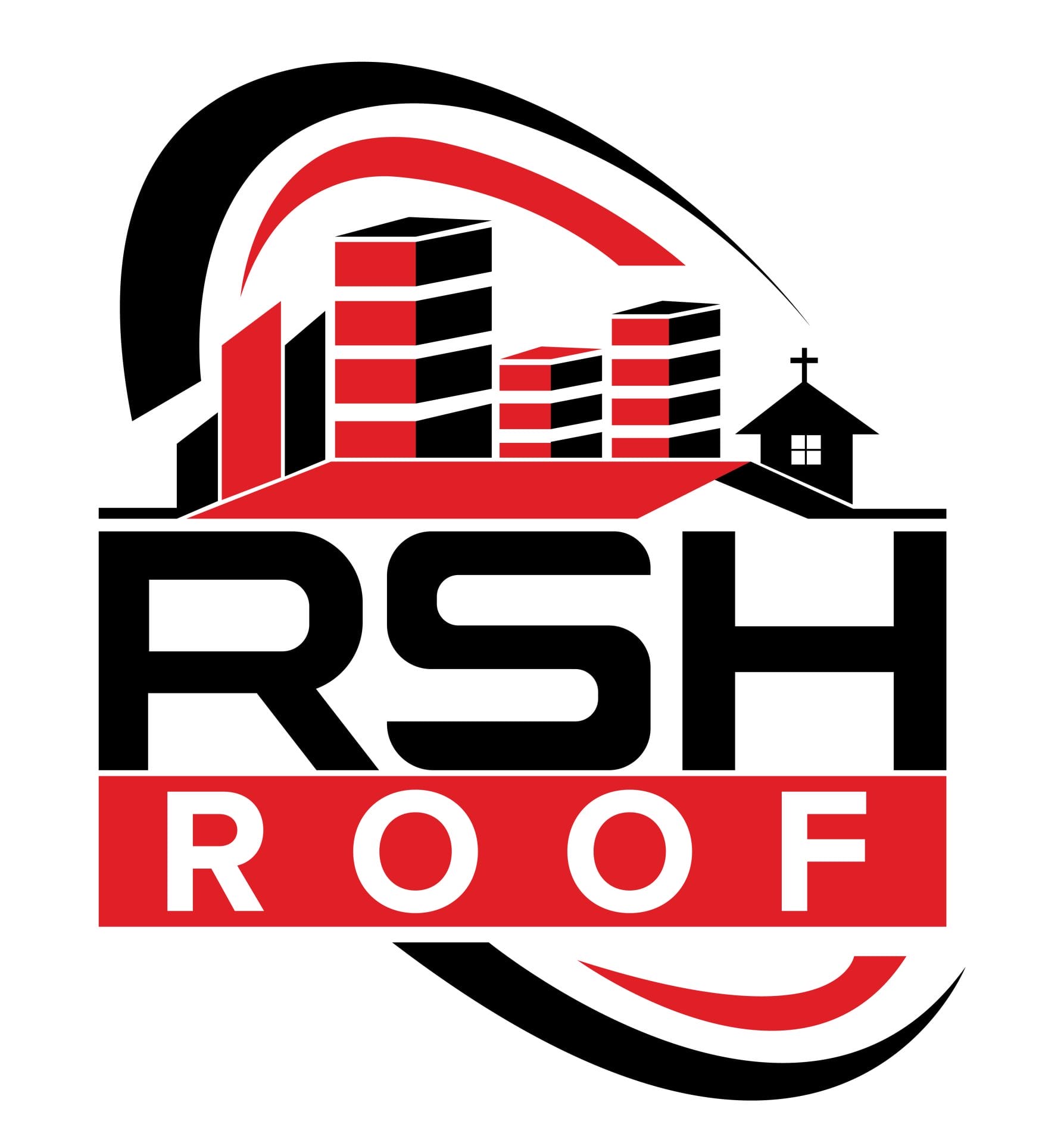RSH Commercial Roofing is a Professional Engineering & Construction Company with 25+ years of experience that specializes in Commercial & Residential Roof Inspections, Repair/Replacement services as well as commercial roofing insurance claims.

The Importance of Roof Ventilation in Commercial Buildings
Introduction:
Roof ventilation is like an umbrella for home/commercial buildings, holding the feature of protecting the property from extreme heat and moisture. The importance of roof ventilation provides energy for the longevity of the roofing system.
Willing to install a roof ventilation in your home? Take the help of this guide to explore what’s the importance of roof ventilation and its key concepts, to highlight touch to its best practices.
What is roof ventilation?
Commercial roof ventilation refers to the algorithm of allowing air to rotate through the attic or roof space of a building. Commercial building ventilation consists of a system of vents and fans that improves the airflow and ensures the roof space remains cool and dry.
Importance of roof ventilation
Roof maintenance plays a vital role in shaping the property. The importance of roof ventilation consists of the following points:
Elevating energy efficiency:
The primary benefit of commercial ventilation is to elevate energy efficiency. During hot seasons, heat can accumulate in the roof space, can lead to raise in the room temperature and force HVAC systems to work fastly. The proper commercial roofing system helps to reduce the cooling costs and improves overall energy efficiency.
Extending commercial roof life expectancy:
A systematic roof installation can significantly extend the life expectancy of the commercial roofing system. Controlling heat and moisture are the two enemies to be controlled. Excessive heat can lead to the disadvantages of degraded materials, while the accommodated moisture can lead to mold, mildew, and rot. By circulating proper airflow, roof ventilation allows for the mitigation of risks, preserving the roof from decay and allowing for repair.
Prevents roof from moisture damage:
Moisture can devast the commercial roof. In colder climates, warm, moist air from the building can rise into the roof space. It condenses on the underside of the roof deck, leading to rot and structural damage. The commercial roof ventilation ensures moisture accumulation.
Improves the air quality:
When the roof ventilation is installed properly it improves indoor air quality. Without adequate roof ventilation, pollutants, odors, and moisture can come inside the building, which can lead to poor air quality and several health issues. Therefore, a well-arranged ventilated roof can maintain a healthier indoor environment by giving an entrance of fresh air.
What are the components of a commercial roof ventilation system?
The initial components of a commercial roof ventilation system are used to install the roof ventilator. The following list of components:
Intake vents:
The intake vents are placed at the lower edge of the roof. The eaves or soffits allow fresh and cool air to enter through the roof space.
Exhaust vents:
The exhaust vents are positioned next to the roof’s peak, allowing hot, stale air to escape through it. Common exhaust vents include ridge vents, turbine vents, and powered exhaust fans.
Fans:
In some homes, mechanical fans are installed to enhance an airflow, this is especially installed in huge and commercial buildings, where basically ventilation is insufficient.
Best Practices for commercial roof ventilation
After installing commercial roof ventilation in home, it gives the best practices. The following points need to be kept in mind when loading roof ventilators in home/commercial buildings.
Proper installation of roof ventilators:
The total effectiveness of a commercial roof ventilation system depends on the proper set-up. Experienced roof contractors understand the nuances of commercial roof installation.
Requires regular/ alternative days maintenance:
After the installation of the roof ventilator, the work isn’t complete yet. Commercial roof maintenance requires regular maintenance and functioning. The regular check ups include inspecting vents for blockage, operating of fans, and checking any wear or damage.
Balancing system of intake and exhaust:
Ensure the roof ventilation is properly installed to balance the intake and exhaust vents. There should be a steady flow of air through the roof space. In this condition, when ventilation is inadequate, it can lead to negative pressure.
What is the role of roof contractors?
Experienced roof contractors have their own specific role in settling commercial roof systems. The following are points that specify the role of expert roof contractors:
- Properly managed ventilation solutions for all needs
- Establish precise installations
- Genuine on-going maintenance
- Need commercial roof repairs services
Therefore, choosing the right roof contractor gives you a relief feeling that the commercial roof ventilation system is working effectively and long-lasting.
How do we address common ventilation issues?
The common ventilation issues that are mostly generated after installing a roof system are:
- Inadequate ventilation in commercial buildings can cause poor design, incorrect installation, or simply not enough vents.
- Blockage in vents can lead to damage to debris, insulation, or even pests.
- The cause of mechanical failures, such as problems in circulating fans, requires maintenance.
Is it good to invest in roof ventilation?
Investing in a commercial roof ventilation system pays off in the long pay. The importance of roof ventilation not only gives protection to your property but also its occupants and reduces energy costs. The lifespan of some roofing systems is relatively low for a small roof system, but compared to a big roofing system, it saves potential energy bills and avoids repair costs.
Conclusion:
Proper roof ventilation system is a beneficial point for commercial buildings. It elevates energy, and extends the lifespan of the roofing system, which also prevents moisture and improves indoor air quality.
By clearly understanding the importance of roof ventilation and installing them it ensures to remain safe, efficient, and cost-effective.
With the addition of the services of RSH Roof, their maintenance and the expertise of professional roof contractors are essential to keep your commercial roof ventilation system retained for longer days.

